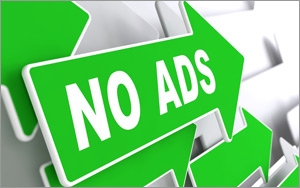 The
estimated loss of global revenue due to blocked advertisements in 2015 totals more than $21.8 billion, and will rise to $41.4 billion in 2016, according to a study. This could explain the slowing
growth of revenue from search and display ads supported by Bing, Google, and Yahoo.
The
estimated loss of global revenue due to blocked advertisements in 2015 totals more than $21.8 billion, and will rise to $41.4 billion in 2016, according to a study. This could explain the slowing
growth of revenue from search and display ads supported by Bing, Google, and Yahoo.
The number of people globally using ad-blocking software grew by 41% during the first half of 2015 compared
with the same time period in the prior year, per a study released by Adobe Systems, and PageFair. As of June 2015, there were 198 million monthly active users for the major browser extensions that
block ads.
The number grew by 48% in the United States during the first half of the year compared with a year ago, rising to 45 million active users during the second quarter of 2015. Oregon
has the highest ad-blocking rate in the U.S. at 16.4%, followed by Washington with 15.5%, and Vermont with 15%. Washington, DC has the lowest ad-blocking rate in the U.S. at 8.2%.
advertisement
advertisement
When it
comes to search engine advertising, some might argue the brand only pays for ads served and clicked on. True, but advertisers can spend hundreds to millions of dollars to create and optimize ads that
never get seen by the consumers for which they're intended. Content creation seems to have become one method of advertising and marketing to circumvent the roadblock.
In the Adobe and PageFair
study, Firefox and Chrome lead the mobile space with 93% share of mobile ads blocked, but with the ability to block ads becoming an option on the new iOS 9, the number will rise. Today, about 16%
of mobile Firefox users block ads. Use of ad blocking in Europe grew by 35% during the past year, up to 77 million monthly active users during Q2 2015.
The report estimates mobile will
facilitate future ad blocking growth. The release of iOS 9 later this year, could become the "game changer," because it will allow users to easily install ad blocking from the App Store. In Q2 2015,
mobile accounted for 38% of all Web browsing, but only 1.6% of ad block traffic on the PageFair network from mobile devices occurred in the quarter.
Services from search engines like
Bing, Google, and Yahoo may become an important alternative to generating revenue. Mark Hibben, an independent iOS developer, writes in Seeking Alpha that revenue and profit will begin to drain from the ad-supported advertising
model and into the subscription-supported part. He points to a post from New York-based Marco Arment, Web and iPhone software developer, predicting the demise of the Web advertising business
model.
Some might think Arment's prediction a bit extreme, the Adobe and PageFair study suggests ad blocking behavior on Web sites has a direct correlation to audience demographics. Visitors
to gaming Web sites are more likely to block advertising, which those on health, charity, and government or legal websites sites are less likely.
Rounding out the predictions, eMarketer points
to June 2015 numbers from the Reuters Institute for the Study of Journalism at the University of Oxford suggesting in the United States 41% of PC users and 11% of mobile users report regularly using
ad-blocking software.